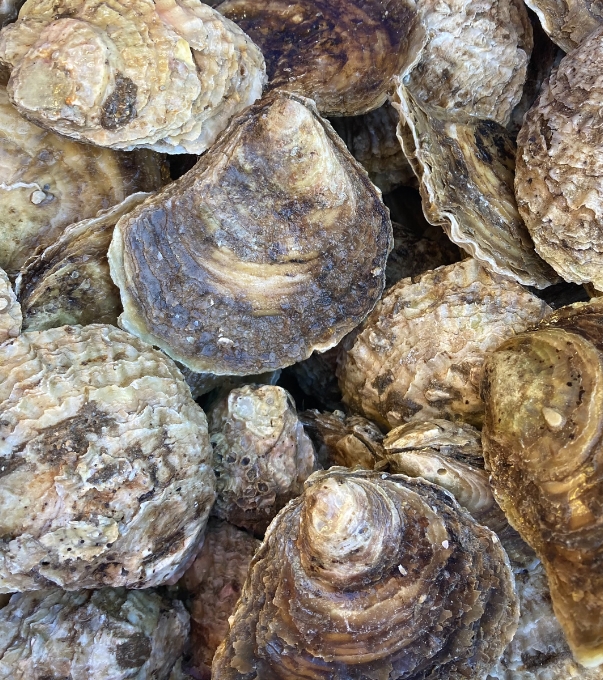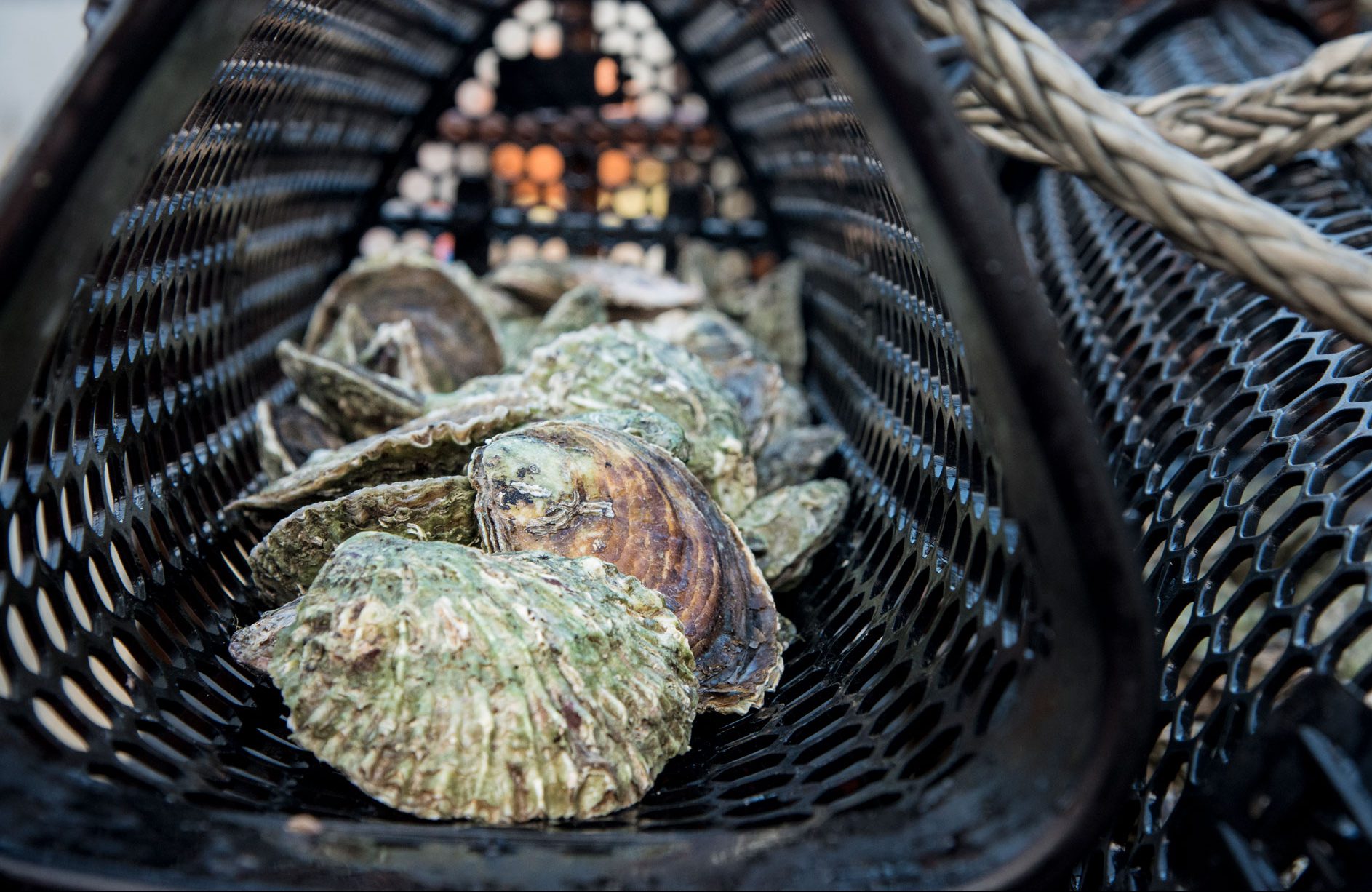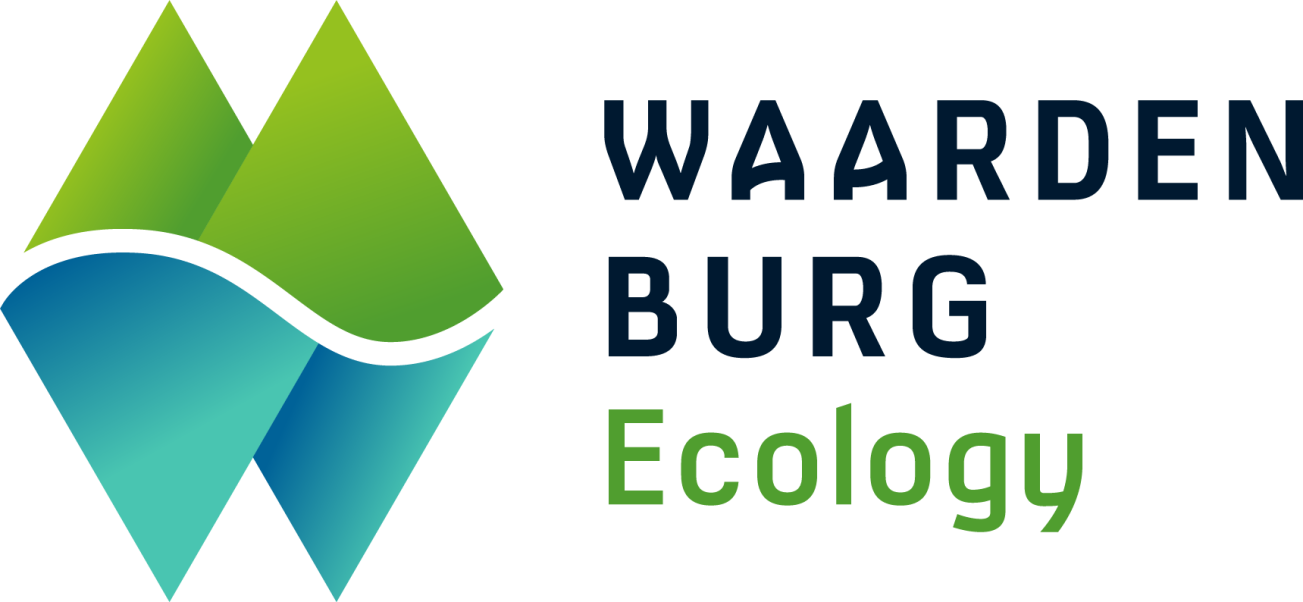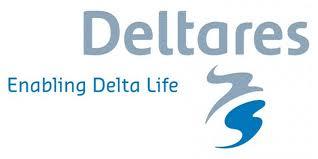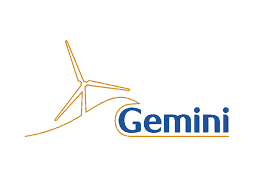This project aimed to develop and study new methods to reintroduce and monitor flat oyster reefs and related biodiversity in offshore wind farms. The project goals included monitoring pilots with the restoration of European flat oyster beds in offshore wind farms, developing new monitoring methods to assess the effectiveness of these pilots while reducing costs and increasing scientific output, and understanding the environmental background of the pilots through intensive monitoring and modelling of surrounding parameters (e.g., temperature, salinity, food availability, turbulence). Additionally, the project aimed to analyse, discuss, and publish the findings in scientific and industrial literature, and to advise on the eco-friendly design of future wind farms. Execution of this project would not only assist with restoration efforts in Dutch marine waters and provide a competitive edge for Dutch research organizations, but could also inform research applied to future projects in other North Sea countries.
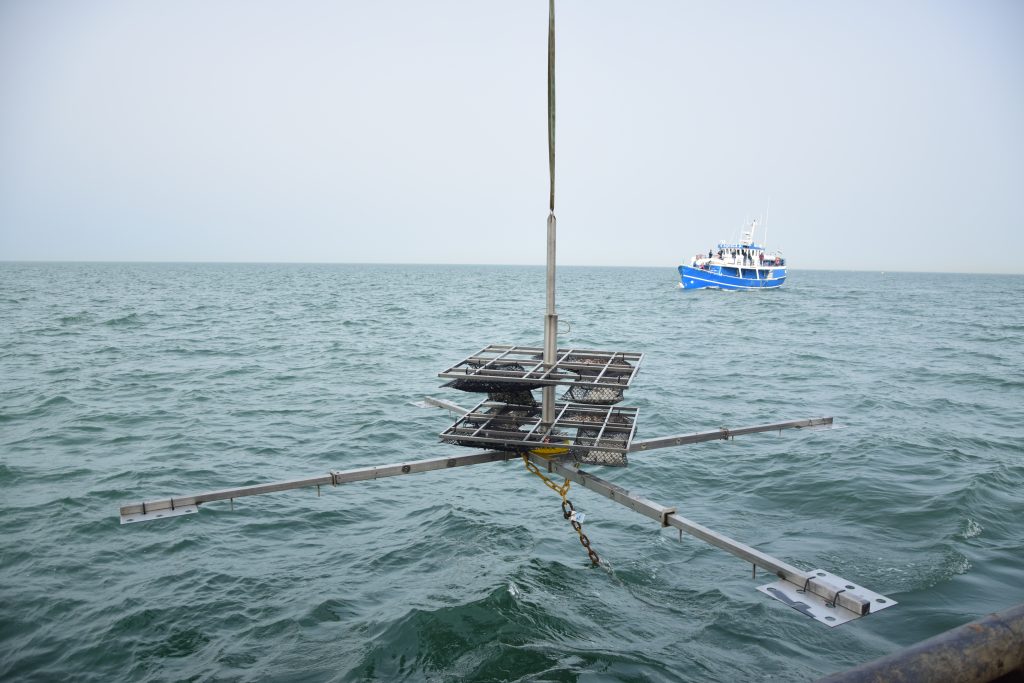
Methods
The project aimed to create a proof-of-concept for the active reintroduction of offshore flat oyster beds, demonstrating whether a viable population of flat oysters could exist in an offshore wind farm, and developing novel methods, including predictive models. To do this, an innovative oyster cage was designed and tested (the WERC-dock) in the Offshore Test Site.
Oyster activity in the Gemini wind farm was measured by a valve gape monitor, and larval counts were done by traditional sampling as well as DNA-analysis (qPRC), which is easier to use than the traditional visual analysis by microscope (though high variability was still found). A model was made to determine oyster mobility on the seafloor, and a temperature prediction model was used and improved to predict larval peak production in the Dutch North Sea. Furthermore, survival and growth of the adult flat oysters was measured, as well as larval settlement success on substrate provided in the reintroduction system and on other substrates in the environment (shipwrecks and natural rocky reefs).
To get an impression of the (fish) biodiversity of the environment, environmental DNA (eDNA) sampling was done. Trials with bait cams and a consumer type underwater drone (ROV) were also conducted. Both methods proved to work (after some adaptations in the bait cam set-up) to get an impression of the fish and benthic community present
Results
Monitoring:
- New eDNA analysis methods, such as ‘high resolution long read metabarcoding’, have great potential for rapid and accurate fish monitoring. However, reference databases are still incomplete.
- eDNA metabarcoding can identify changes in habitat types based on the specific species composition of detected fish.
- The use of qPCR DNA analysis for the detection of oyster larvae was found to be high in variability in comparison to traditional inspection by microscope.
- On the basis of the 3D DCSM-FM model and the results from basin experiments, it could be shown that the turbulence caused by regular strong storm events causes dispersal of flat oysters in the seafloor in water depths less than ca. 40 meters.
- The use of eDNA for biodiversity research proved to work well and is now commonly used in many other nature restoration pilot projects in the Dutch North Sea.
Biodiversity and Habitat:
- Specific fish species were found to be most common in different locations.
- There appears to be an increase in species richness over the years, likely due to improved laboratory work and bioinformatics analysis rather than an actual increase in species.
Tips and Tricks
- Placement of oysters is critical to their survival.
- Customize your budget to suit your research needs. Expensive does not always equal best. For example, smaller ROVs can perform as well as commercial ones. In some cases, investments will save you down the line—for example, rather than using lightweight frames for oysters, larger and heavier structures may cost more but are more reliable to stay on the sea floor.
- Combine objectives with vessels to maximize research and monitoring time.
GEMINI wind farm had permits needed to use the wind farm. Permits are also required to enter the wind farm and deploy oysters. Additionally, health and safety measures are crucial to using a wind farm. Crew members are required to have medical examinations, a basic offshore safety course is required, and a risk assessment method statement (RAMS) is critical for many steps in this type of project.
Eco-Friend explained
Watch this video on the Eco-Friend project to learn more about the project goals, impact and results.
Dummy oysters
To study oyster mobility on the seafloor, Eco-Friend deployed dummy oysters for easy tracking. Watch this video to view how the deployment of dummy oysters was done in practice.
Products used on this project
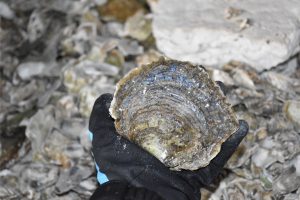
Live adult European flat oysters
Some species need a lift to get back to their original habitats. Flat oysters used to inhabit large parts of the North Sea, but have been pushed to extinction in many places. Releasing adult oysters into the wild can boost the natural population. For more information on living flat oysters, please refer to the oyster guide.
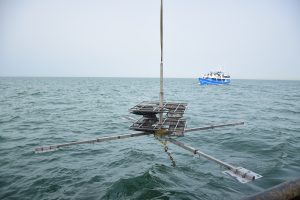
WERC dock
The WERC dock is a robust device which holds oyster baskets on three layers over a fixed pole. Stabilized by four widespread arms, it is easily deployable and retrievable from the seafloor using ROV. This structure supports flat oyster restoration pilots aiming to initiate self-sustaining population recovery.
Let's connect
Ready to dive into nature enhancement? Send us an email to share your questions, feedback, or projects you’re working on.
